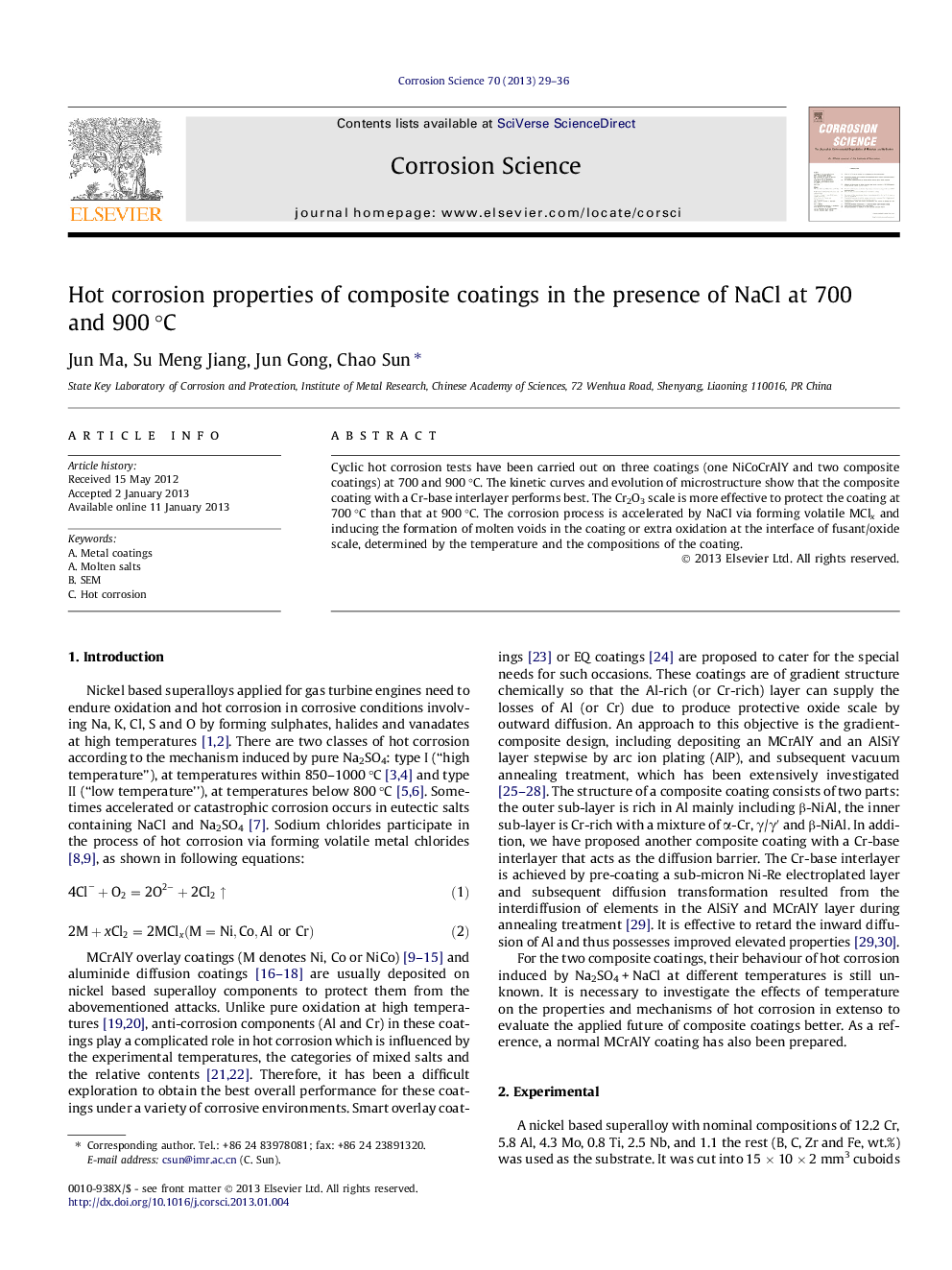| Article ID | Journal | Published Year | Pages | File Type |
|---|---|---|---|---|
| 1469174 | Corrosion Science | 2013 | 8 Pages |
Cyclic hot corrosion tests have been carried out on three coatings (one NiCoCrAlY and two composite coatings) at 700 and 900 °C. The kinetic curves and evolution of microstructure show that the composite coating with a Cr-base interlayer performs best. The Cr2O3 scale is more effective to protect the coating at 700 °C than that at 900 °C. The corrosion process is accelerated by NaCl via forming volatile MClx and inducing the formation of molten voids in the coating or extra oxidation at the interface of fusant/oxide scale, determined by the temperature and the compositions of the coating.
► Composite coating with the Cr-base interlayer performs best during hot corrosion. ► Cr2O3 is more effective to protect the coating at 700 °C than that at 900 °C. ► Degradation of the coating was accelerated by NaCl via forming volatile MClx. ► The formation of molten voids and outside extra oxidation are induced by MClx. ► Temperature and the content of Al/Cr affect the specific corrosion mechanism.
